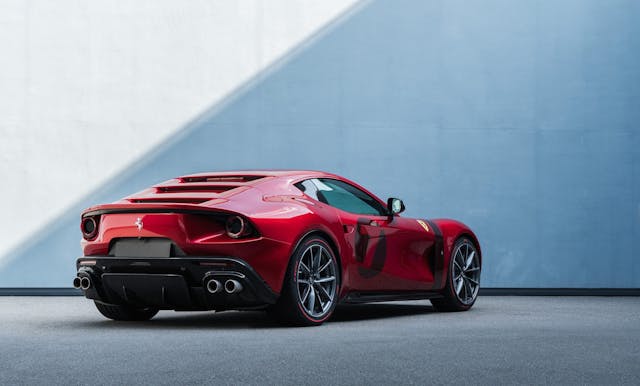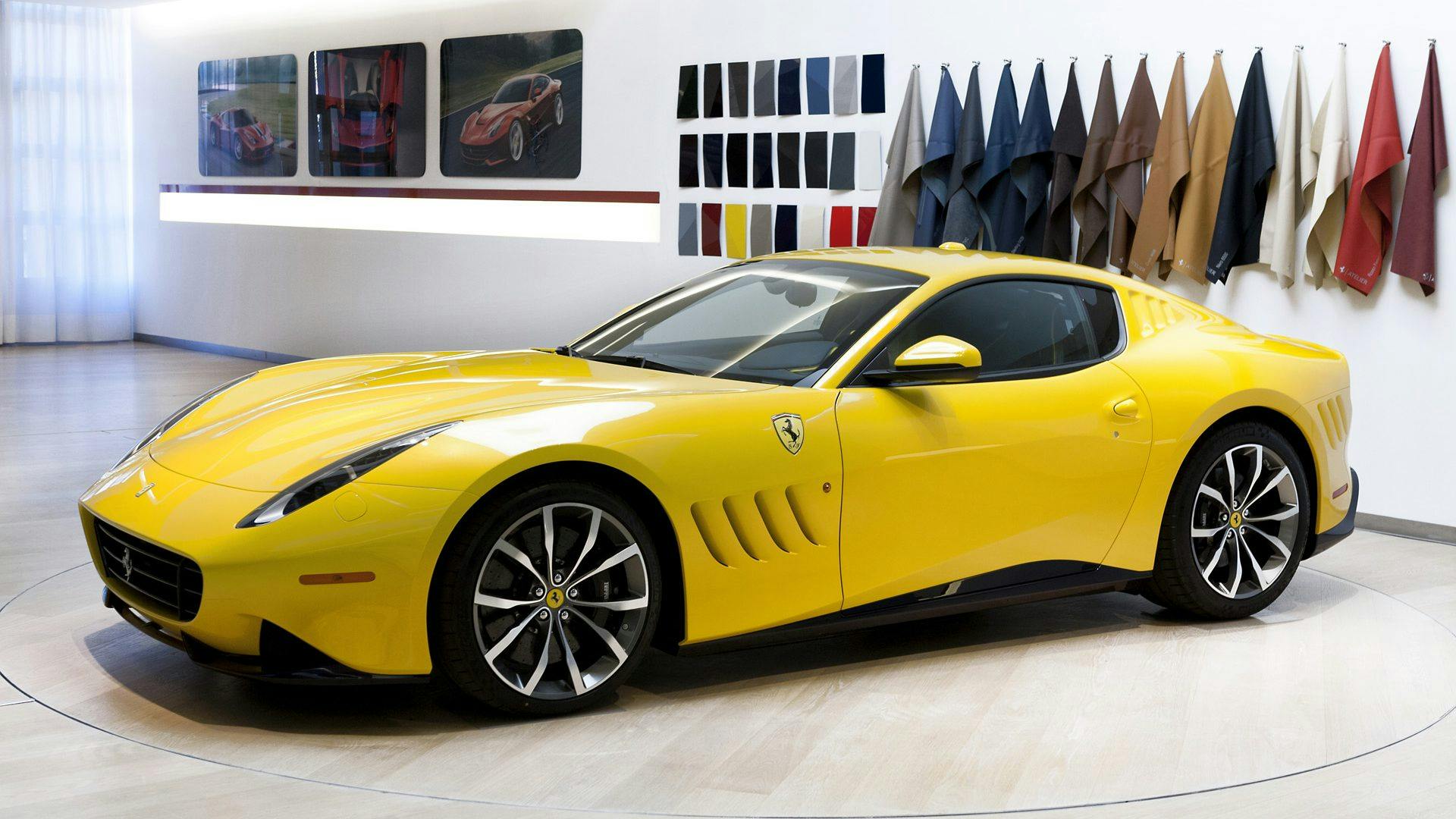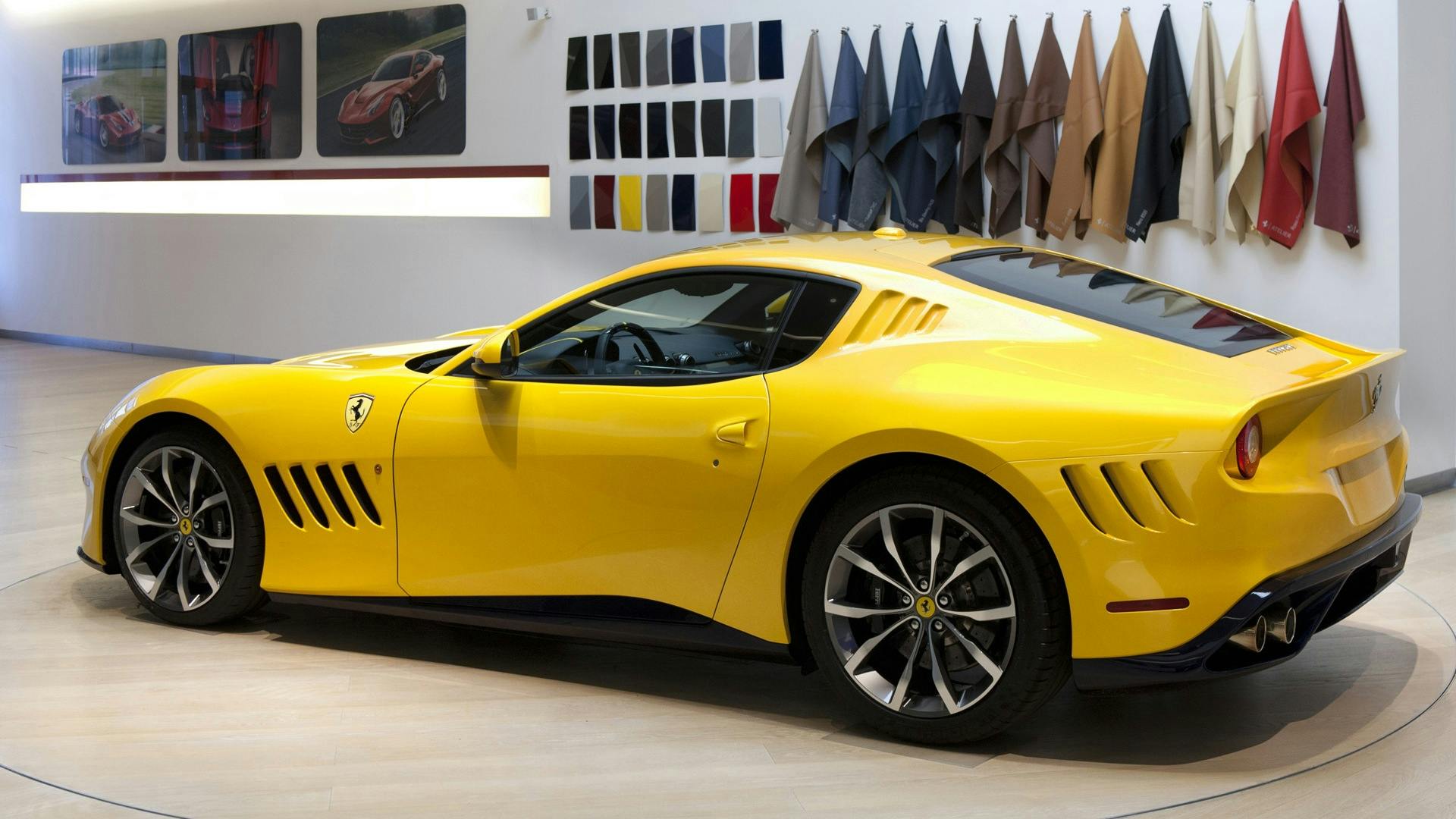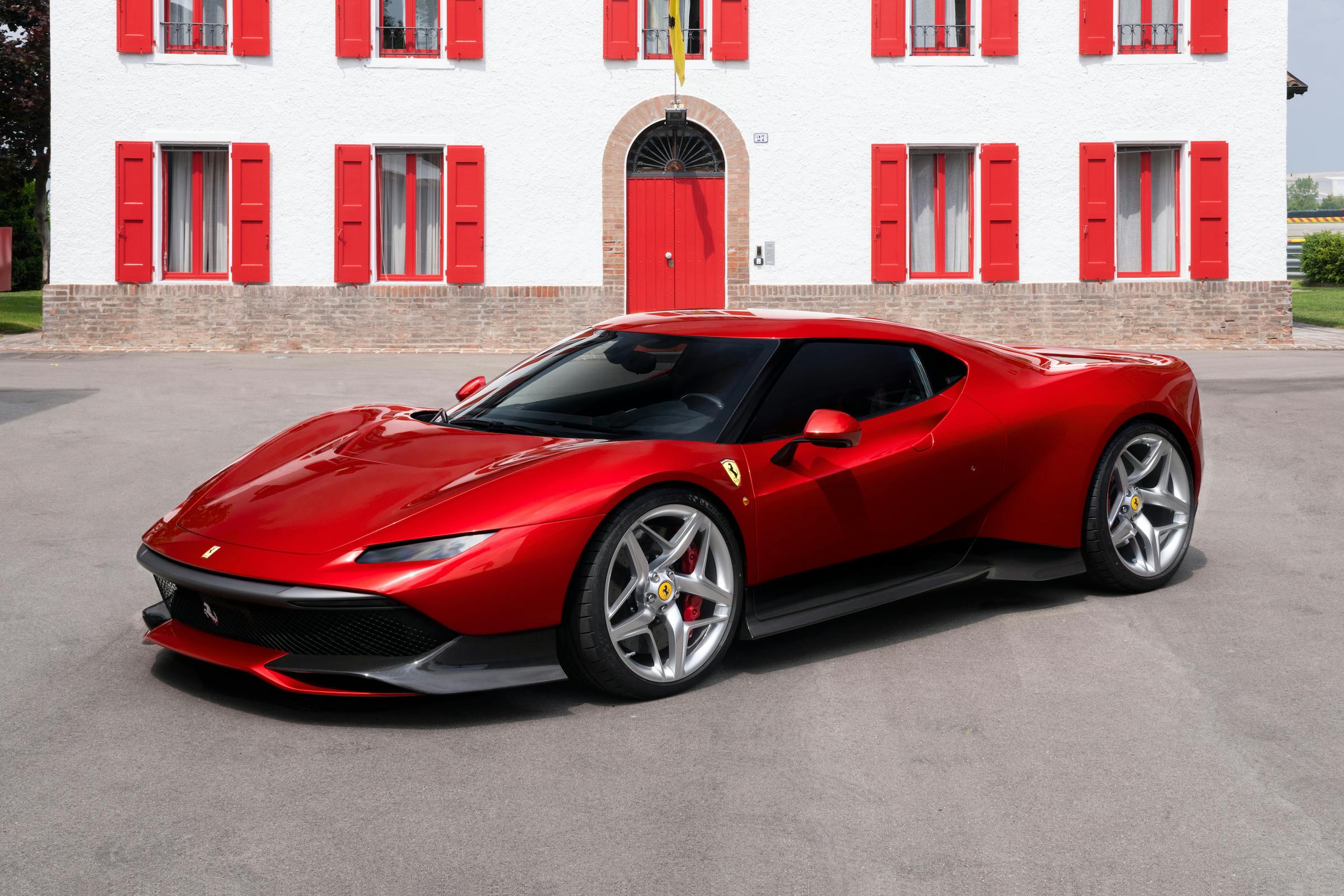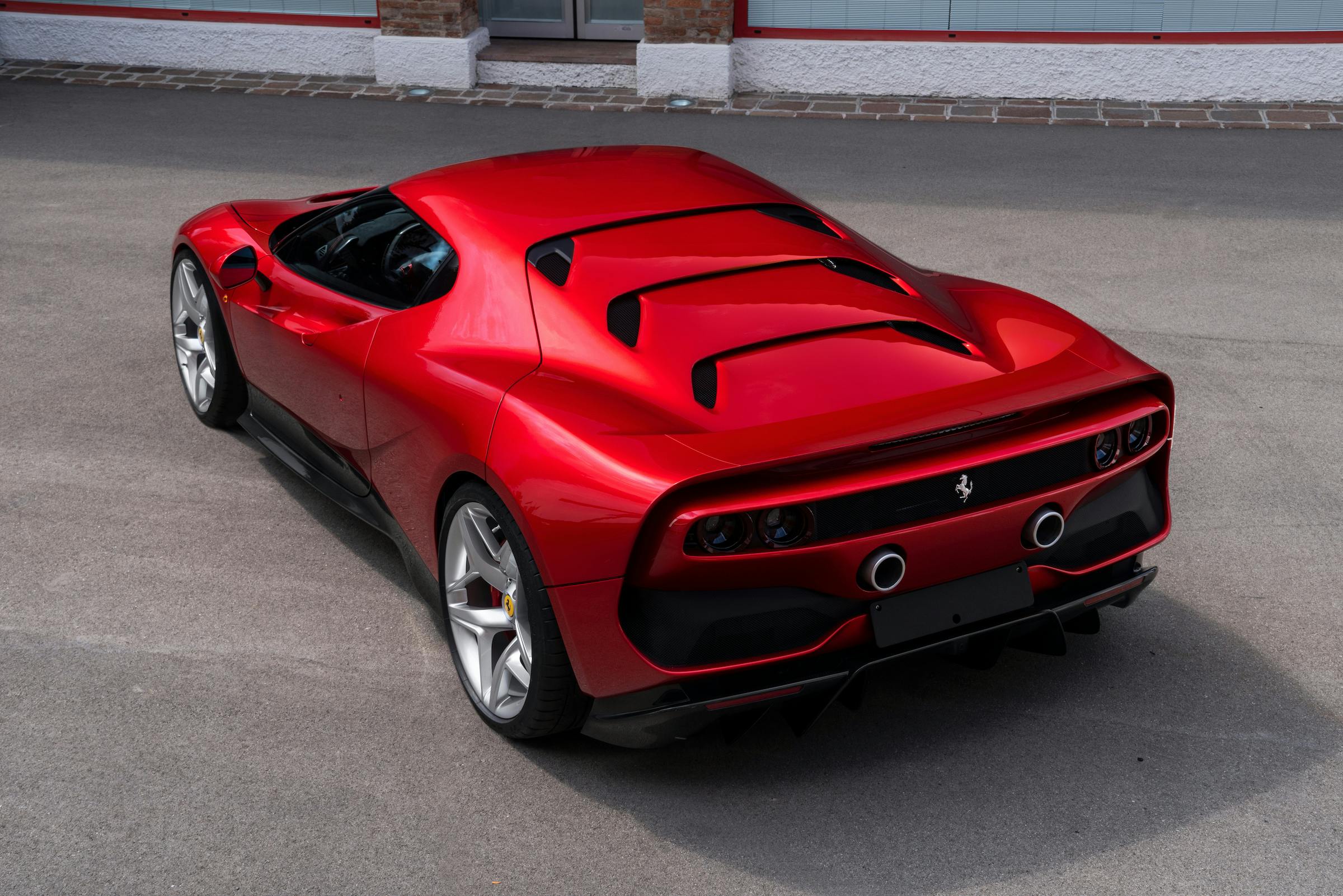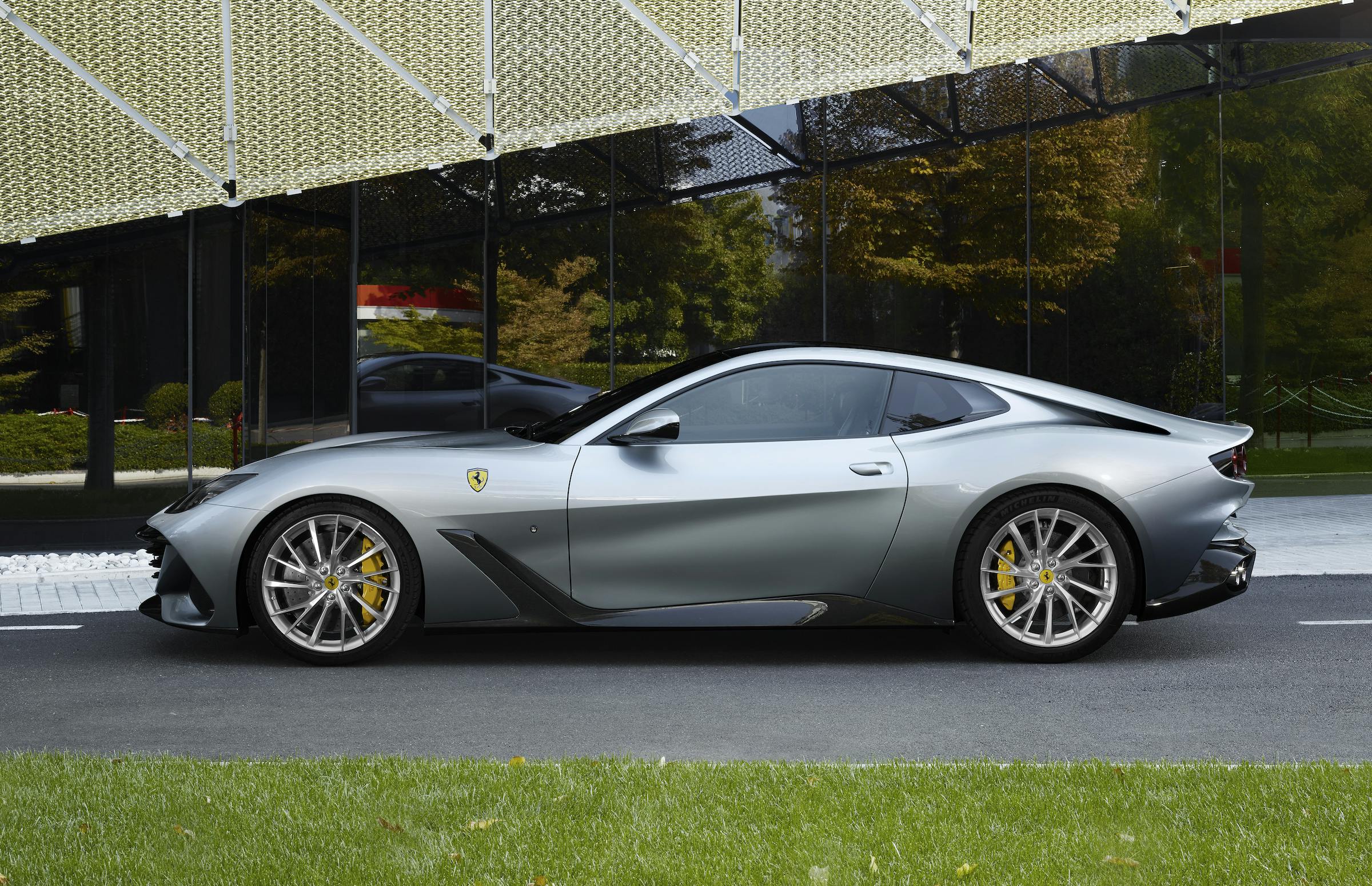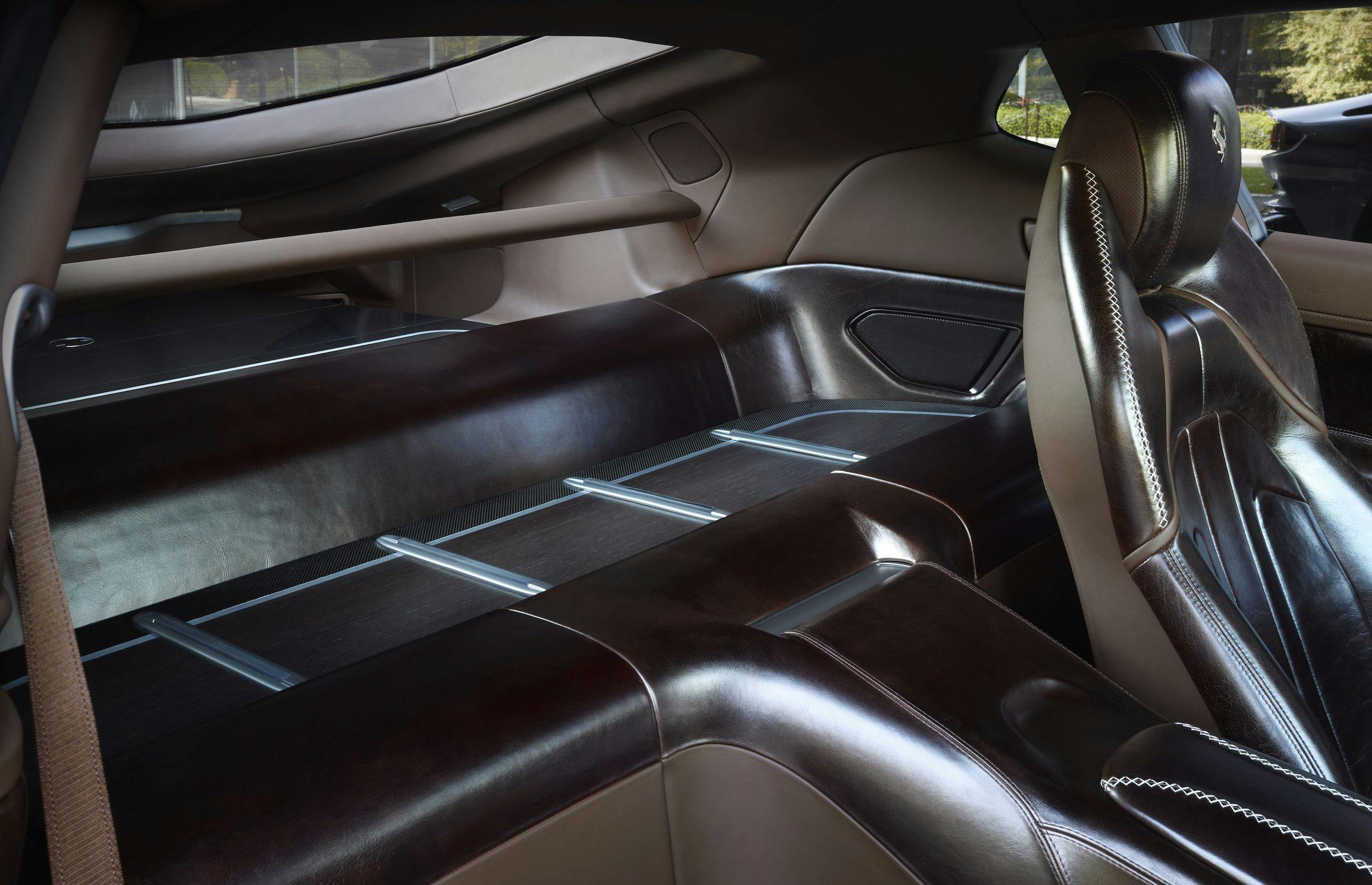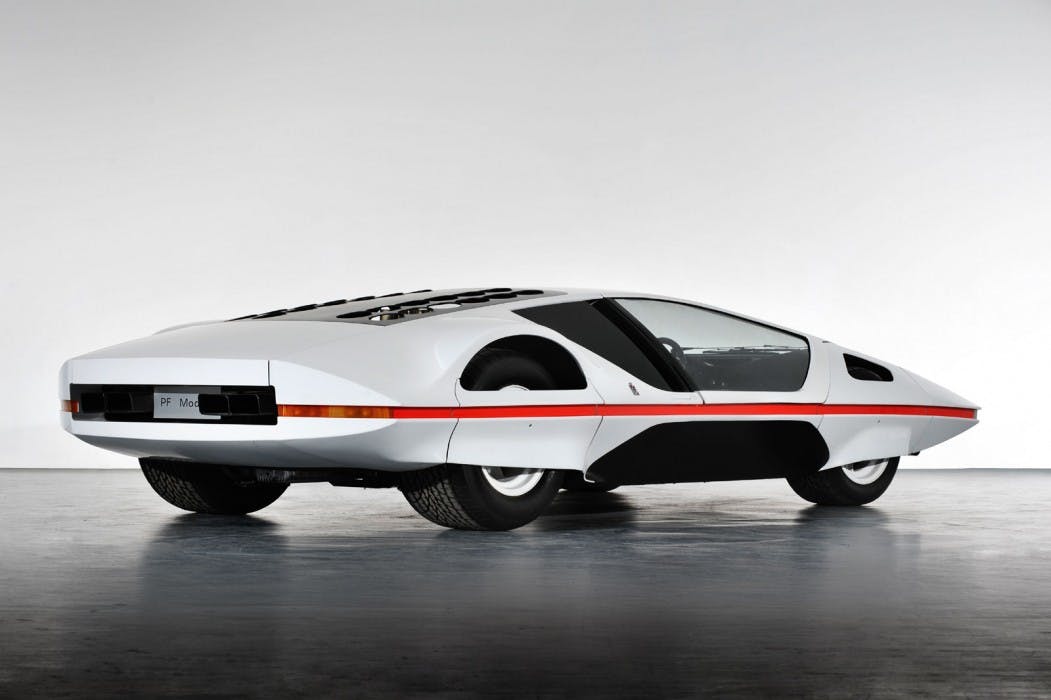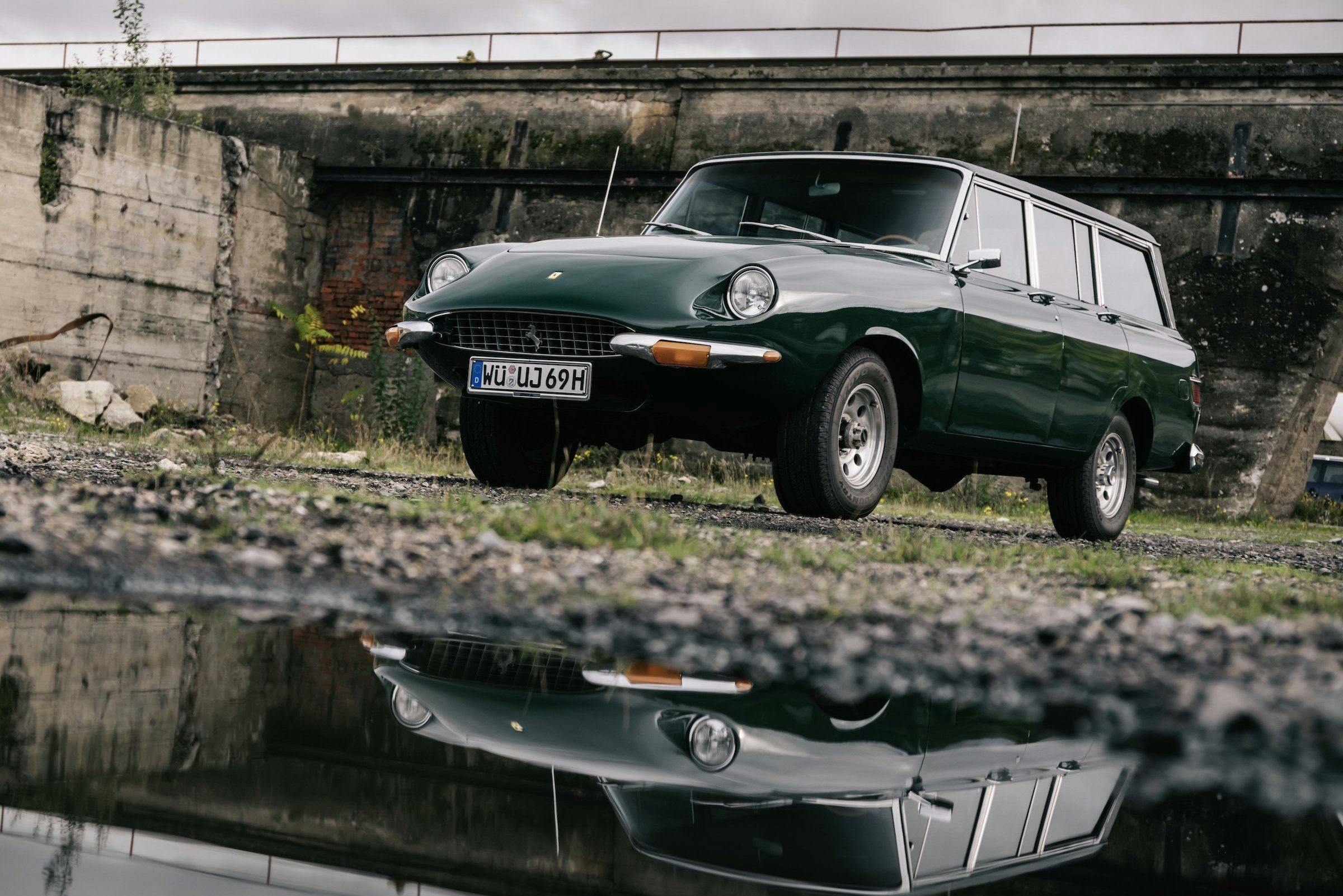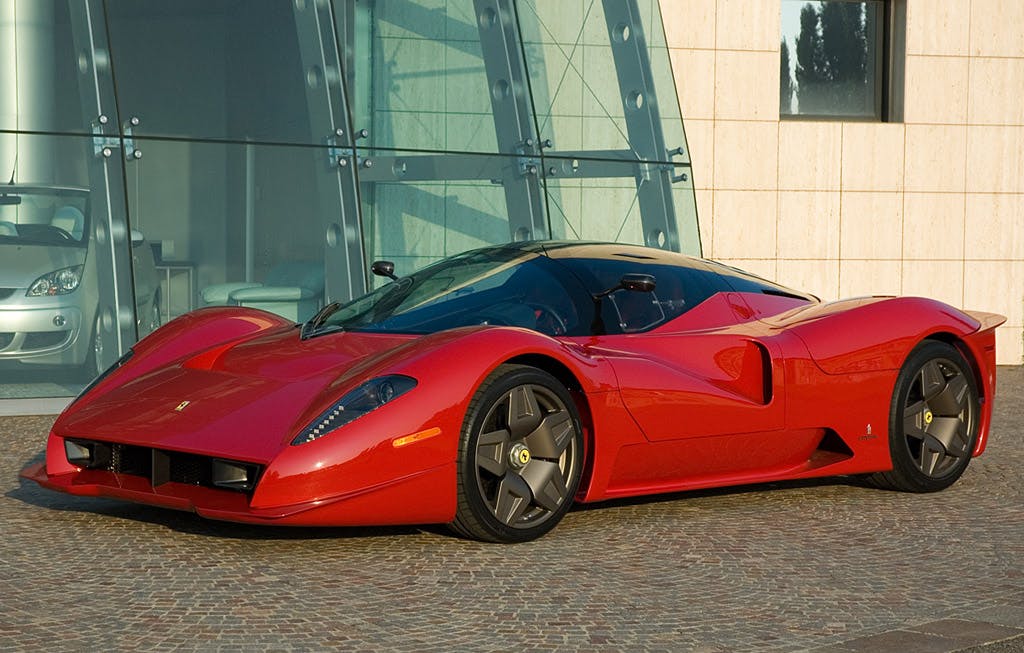12 unique Ferraris created by Maranello for collectors
Ferrari recently unveiled its latest one-off supercar, the SP48 Unica. This F8 Tributo–based machine adopts the basic mechanics of one of the brand’s mainstream models and reclothes them in a seductive, custom skin—but though the Unica is unique, it’s hardly the first time Ferrari has applied such formula for its very best collectors.
Maranello has been doing so since 2008, when it opened the Portfolio Coachbuilding Programme. Designed to allow special clients—only around 250 worldwide, by Ferrari’s count—to commission their own creations, it has crafted an unrepeated model nearly every year since its founding.
Yet there is still a limit to how many custom cars Ferrari can build. According to the Scuderia Ferrari Club of Latvia, that number is just one or two a year. That means a five-year waiting list—longer than any “regular” Ferrari production line. That doesn’t stop the most loyal fans of the Prancing Horse, though, as these 12 unique builds attest.
2008 Fioravanti SP1
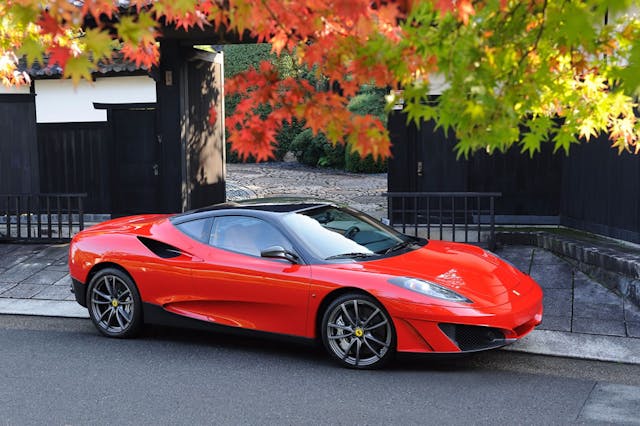
SP1 gives the game away. Penned by Leonardo Fioravanti for a Japanese client who was a fan of the designer’s F100 concept of 2000, the SP1 was the first special project to emerge from the Portfolio Coachbuilding Programme. Built upon the F430’s architecture, the SP1 can, unexpectedly, be driven by anyone in Gran Turismo 5 and 6 … but only one person holds keys to the real deal.
2009 P540 Superfast Aperta
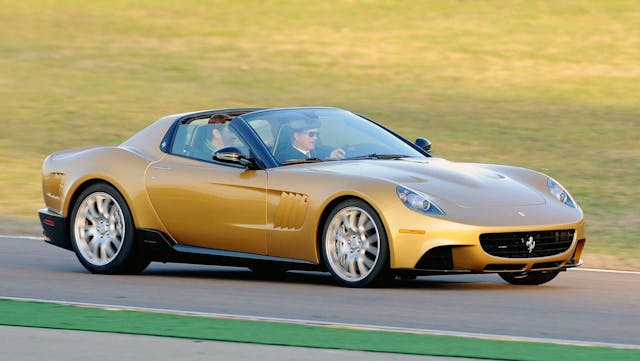
The second one-off to emerge from Ferrari’s one-off program illustrated the variety of which it was capable. The P540 Superfast Aptera sat atop a front-engined V-12 platform, that of the 599 GTB Fiorano, and evoked another bespoke Ferrari, the Carrozzeria Fantuzzi–designed car featured in the 1968 short film, Toby Dammit. The car was commissioned by Edward Watson, an American who was the son of the inventor of cable TV.
2011 Superamerica 45

Launched at Villa d’Este in 2011, the Superamerica 45 mixed the qualities of two recent Ferrari models: the then-new 599 GTB and the 575M Superamerica that had debuted six years earlier. While the 45 used the 599’s mechanicals, it took its novel rotating one-piece roof arrangement from the special open-topped 575. The car’s name marked the time since its client, Peter Kalikow, had bought his first Ferrari.
2012 SP12 EC
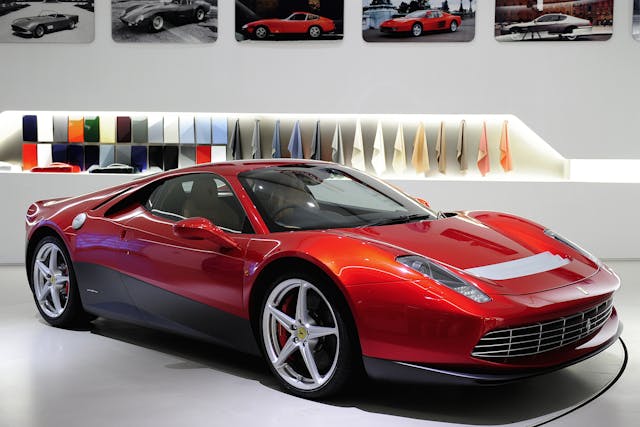
It’s one thing to have a one-of-a-kind Ferrari built to your own whims and desires. It’s another for it to carry your initials in the title, like the 2012 SP12 “EC” built for Eric Clapton. Slowhand’s fast Ferrari was an homage to the 512 Berlinetta Boxer, albeit based on the then-new 458 Italia, and the Pininfarina-shaped car was rumored to cost more than £3 million (today, $4.6M).
2014 F12 TRS

Ferrari’s bespoke program swung back to front-engined models in 2014 with the F12 TRS. As the name implies ,the source material here was the V-12–motivated F12 Berlinetta, and while you couldn’t tell from its side profile, it went senza roof, the windscreen and side windows curling around the cockpit like those of the 250 Testarossa that inspired it. In a feature familiar to mid-engined Ferraris but rarely to front-engined ones, the engine was also put on display thanks to a transparent panel in the bonnet. (C6 ZR1, anyone?)
2015 SP America
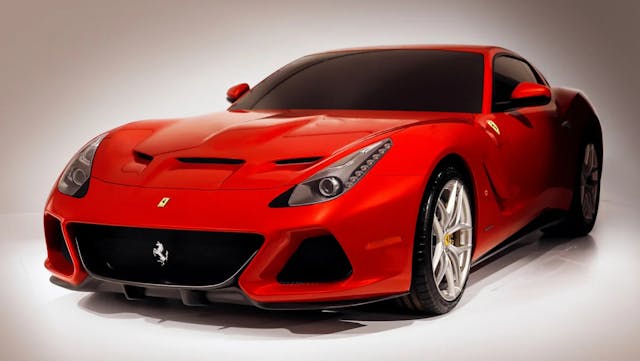
Another F12-based one-off, the SP America is perhaps less dramatic than others here, looking more clearly like a restyled version of the car upon which it is based. The inspiration here is the 250 GTO—most clearly visible in the pair of sculpted vents behind the front wheel and the trio in the bonnet. As its name suggests, the SP America was created for a stateside client.
2016 SP275 RW Competizione
Go on, have a guess which production Ferrari undergirds this front-engined, V-12-powered custom. Okay, that one wasn’t difficult—another F12. Like the SP America, this 2016 build also evokes another classic Ferrari GT, the 275 GTB of the 1960s. Perhaps the most successful restyling of Ferrari’s 2012 through 2017 front-engined supercar, the RW Competizione swapped out the standard F12 engine in favor of the F12 tdf’s 760-hp monster.
2016 458MM Speciale

In a rare diversion from Rosso Corsa, the 458 Speciale–based 458MM instead went down the pure Bianco Italia path, complete with a tricolore stripe like that of the 360 Challenge Stradale. Ordered by a British client, the MM’s black A-pillars gave the windscreen a visor look (since replicated on production models like the 296 GTB) with sharper, more pronounced details than those of the standard 458.
2018 SP38
With the transition from 458 Italia to 488 GTB, Ferrari said goodbye to its last naturally aspirated V-8 engine and hello to a pair of turbochargers. Plenty of heritage to pluck from when it comes to turbocharged V-8s though, and the SP38’s slatted back window was a nod to perhaps the most significant turbocharged Ferrari, the F40. What it did for visibility in the SP38—given it was formed from carbon fiber and not from Perspex—is another matter.
2019 P80/C
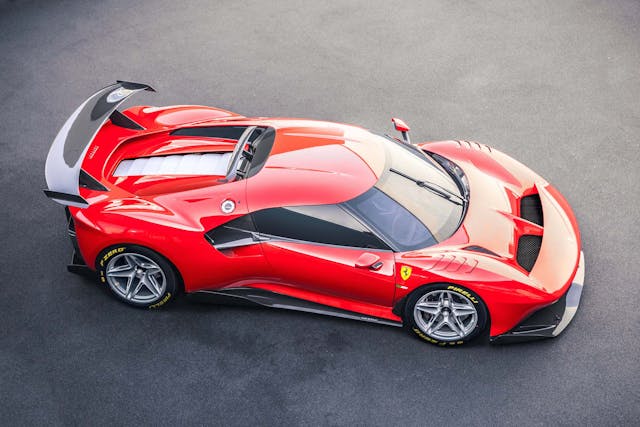
They’d call it a “flex” these days: Not simply having Ferrari build you a one-off supercar, but asking the Programme to base it on a racing car, the 488 GT3. A mad choice, in some respects, since you’d have nowhere to race it, but then that’s the case with Ferrari’s FXX cars, too. More than a spot on the Le Mans grid, what the Hong Kong–based owner wanted was a modern racer that took inspiration from ’60s and ’70s sports prototypes. While there’s no power figure, the engine was said to be uncorked from the “balance-of-performance”–regulated 590 hp of the GT3 car.
2020 Omologata
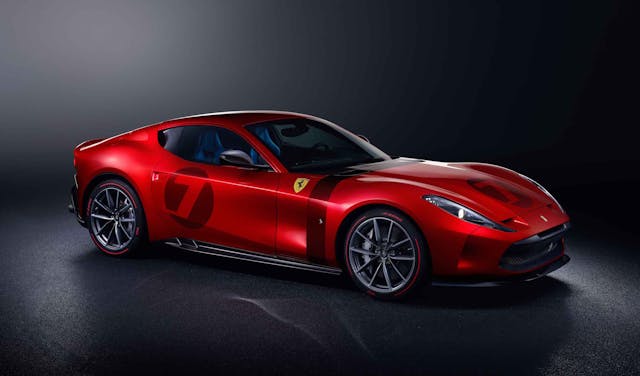
By 2020, the F12 had replaced by the 812 Superfast in Maranello’s range, so that’s what underpinned 2020’s Omologata. Two years of work resulted in a smoother, arguably prettier shape than that of the 812, with (once again) hints of cars like the 250 GTO. Triple-layer Rosso Magma paintwork gave the car an almost liquid-like finish.
2021 BR20
In an unusual twist on the front-engined theme, 2021’s BR20 was based on Ferrari’s grand tourer, the GTC4 Lusso. Still a V-12 then, but with 671 hp, not quite as wildly overpowered. The BR20 is, of course, unique, but the client took things a step further than new sheetmetal. Despite the four-seat arrangement of the donor car, they requested just two seats, allowing for both a lower roofline and an expanded luggage area.
Other one-off Ferraris
The run-down above is by no means comprehensive. Ferrari is thought to have made more than forty cars since its Portfolio Coachbuilding Programme began in 2008, and many simply haven’t been revealed to the unwashed masses.
Even these aren’t the first custom Ferraris. Before Ferrari took the idea in-house, it was typically up to coachbuilders to fulfill the desires of wealthy clients. Some, such as Jim Glickenhaus’s P4/5, built by Pininfarina but bearing Ferrari’s blessing, were exquisite. Others, like casino magnate Bill Harrah’s Jeep-based “Jerrari,” less so.
Perhaps the most famous commissions were those made for the Sultan of Brunei. Many, such as the Enrico Fumia–designed and Testarossa-based F90, are rarely seen—though as six were built, that somewhat rules it out as a strict one-off. The same applies for the Sultan’s custom 456 saloons and estates.
And of course, there are the prototypes, which are unique almost by definition. We didn’t include them here as they were not strictly production-spec models, but cars like the Pinin four-door saloon and the incredible 512 Modulo of 1970 were still running and driving Ferraris.
